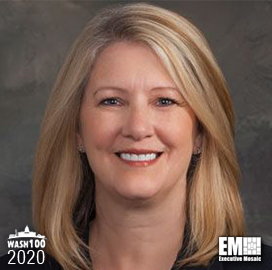By Chuck Brooks, President of Brooks Consulting International
Securing space systems is imperative. Satellite security must be comprehensive, covering every facet of both terrestrial and orbiting satellites, including end-user routers and ground communications systems. There is a non-kinetic threat to space assets. Adversaries can interfere with or take down satellites and ground-based equipment using a variety of tactics. Through Earth-bound entry points, satellite operations can provide cybercriminals with a multitude of hacking avenues. The utilization of long-range telemetry for communication with ground stations is one of the shortcomings of satellite systems. Cybercriminals can access the open protocols used to send the uplinks and downlinks.
The late Paul Ferrillo and I wrote a piece for Homeland Security Today titled “Protecting Space-Based Assets from Cyber Threats.” In that article we provide a non-exhaustive list of security components below that can be used to protect satellites, space-based assets and ground-based control flight networks. Below are some of our suggestions, which incorporated a variety of government and non-governmental sources.
- Every satellite is engineered with security from the ground up, not as an afterthought.
- Identity and access management, or IAM – in order to try and prevent unauthorized access to crucial vehicle operations, anyone gaining access to flight control information and surfaces must be recognized and validated by an IAM system that can pass muster on the user via machine learning identifiers.
- Perform a multi-check for Internet of Things-related devices. Hard-coded passwords shouldn’t be permitted on IoT devices; instead, they should be update-able.
- A strong intrusion detection system, or IDS, should be the foundation of a cyber-resilient spacecraft. Continuous monitoring of telemetry, command sequences, command receiver status, shared bus traffic, flight software configuration and operating states should all be part of the IDS. It should also be able to predict and adjust to counteract evolving hostile activity. Critical spacecraft systems should be able to be switched back to a recognized cyber-safe mode by the IPS and the ground crew. It should be possible to cross-check logs for unusual activities.
- Supply chain risk management programs must be implemented by spacecraft developers. They have to make sure that every one of their providers follows the agreed-upon chain of custody while handling hardware and software. Aside from being identified and treated differently from noncritical units and subsystems in terms of requirements and rigor, critical units and subsystems should also be built with security in mind. Configuration management and secure software development techniques like DevSecOps should be used to appropriately vet and handle all software on the spaceship.
- For cross-validation, command logging and anomaly detection of command sequences should be carried out independently by the spacecraft and the ground. In order to ensure consistency between commands given and received, directives received can be automatically recorded, transmitted to the ground via telemetry, and validated.
- Measures like signal strength monitoring and guarded transmitters and receivers should be taken to prevent communications jamming and spoofing; links should be encrypted for extra protection.
The topic of space system security is getting much attention as of late because of its central importance to our digital ecosystem. An excellent overview of the complexities and issues involved can also be found in an article by Avantika Chopra, “Cybersecurity in Space: A 2024 Perspective.”
Please also see my article in Forbes, “The Urgency to Cyber-Secure Space Assets.”
And check out “Cybersecurity of Space-Based Assets and Why this is Important,” an Atlantic Council Discussion with Dr. David Bray, Dr. William Jeffrey, myself and Dr. Divya Chander.
We are depending more and more on space for both security and trade, making it a developing and crucial cybersecurity frontier. It requires the national security establishment’s attention and should undoubtedly be included as a top priority when it comes to CISA’s critical infrastructure protection. In order to safeguard space assets that are crucial to all domain operations, NASA, the DOD, the USAF and Space Command are also starting programmatic initiatives. There is a pressing need to proceed in a swift, ambitious and targeted manner.





